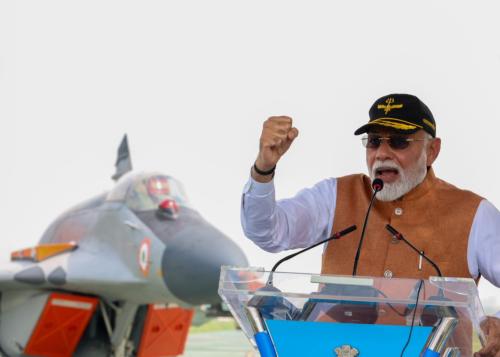Although much of the attention on foreign fighters has focused on Europeans and Americans going to fight in Iraq and Syria, the conflict has particularly inspired Sunni Muslims in the Arab world. Exact figures are elusive, but in February 2015, the head of the National Counterterrorism Center testified that over 20,000 foreign fighters from at least 90 countries had gone to Iraq and Syria. Only 3,400 from the United States and Western Europe—the rest came from Muslim countries, particularly those in the Arab world. Few countries are spared: longstanding jihadist hotbed Saudi Arabia is again a reliable supplier of fighters, but so too are countries far from Syria and Iraq like Tunisia, Libya, and Morocco.
But what happens when these fighters return home?
Foreign fighters who gain combat experience in Iraq and Syria pose a double danger. Many of those who go to war will come back as hardened veterans, steady in the face of danger and skilled in the use of weapons and explosives—ideal terrorist recruiting material. More important, their worldview may change. While in the conflict zone, they will form networks with other radicals, embrace techniques like suicide bombings and beheadings, and establish ties to jihadists around the world, making them prone to further radicalization and giving them access to training and weapons they might otherwise lack.
Several countries in the Arab world, notably Libya and Lebanon, face considerable risk of bleedout from returning fighters and several more face more modest dangers, particularly Algeria, Egypt, Tunisia, and Yemen. However, there is no simple model of bleedout, in part because the groups in Syria and Iraq, and the global jihadist movement in general, are divided as to focus and strategy.
In addition, different countries have different mitigating factors. In particular, the presence or absence of strong and focused security services will have a profound impact on the risk of bleedout. Although many countries are at risk of violence, the strategic impact of returning fighters is likely to be more limited. Militarily and tactically they can create new groups or strengthen existing ones; however, their ambition, regional focus, lack of discipline, and brutality often mean they create more enemies than they vanquish and anger local populations, strengthening the government’s hand.
While it is likely that they will use terrorism, it will primarily be locally and regionally focused, with international terrorism probably less of a priority. Terrorism against Western targets in the region is also likely to grow. Those who fight with the Islamic State imbibe its hostility to the West, both as a military enemy but also as a presence that ideologically is opposed to “true” Islam. Kidnapping of Westerners for ransom is also likely, largely for financial reasons but also because of the publicity such actions bring.
Arab states can reduce the risk of bleedout by hindering the travel of volunteers and constraining their ability to organize, countering the narrative more effectively by stressing the internecine nature of the violence in the Sunni Muslim community, and developing effective deradicalization programs. Regional and international cooperation to monitor and disrupt travel is also valuable. On the other hand, these regimes are likely to take advantage of the jihadists’ presence to gain more support from the United States, delay democratic reforms, and crackdown on non-jihadist opposition.
Returning foreign fighters offer new opportunities to gather intelligence that regional services may be slow to collect and process. In particular, the heavy use of social media like Facebook and Twitter by today’s foreign fighters is a source of vulnerability, allowing for easy collection and knowledge of broader networks as well as real-time information about the movements and activities of fighters. Improving intelligence sharing and offensive counterintelligence is therefore critical to mitigating the terrorism threat. This is where the United States can play an important facilitating role by bringing the different intelligence services together and facilitating the flow of information, particularly in cases where suspicions (or just politics) limit cooperation.
Note: This post is adapted from a longer article I wrote in Studies in Conflict & Terrorism titled “The Homecomings: What Happens When Arab Foreign Fighters in Iraq and Syria Return?” Read it here.
The Brookings Institution is committed to quality, independence, and impact.
We are supported by a diverse array of funders. In line with our values and policies, each Brookings publication represents the sole views of its author(s).




Commentary
What happens when Arab foreign fighters in Iraq and Syria go home?
May 7, 2015